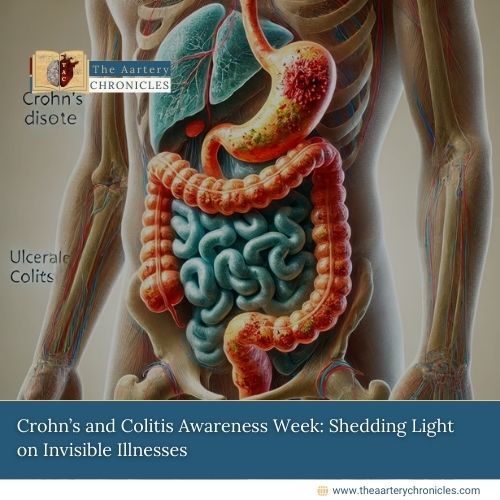

World Keratoconus Day: Know the Signs, Causes & Treatment
Introduction
November 10th is dedicated to raising awareness and support for everyone affected by keratoconus. The aim is to help more people understand keratoconus and why early detection and treatment can make a big difference.
Understanding Keratoconus
The word “keratoconus” comes from two Greek words “cornea” and “cone,” meaning the cone-like bulging shape of the affected cornea. KC was first documented in 1854 by Nottingham. Recent analysis shows that, on average, it affects 138 people per 100,000 worldwide. [2,4]
What is Keratoconus?
- The central cornea (the eye’s clear, front surface) becomes thinner and bulges outward, forming a cone shape.
- This shape change causes nearsightedness (myopia) and irregular astigmatism, leading to blurry and distorted vision. [1,4]
Signs and symptoms Of Keratoconus
The disease usually begins when someone is in their teens or twenties. In the early stages, people do not notice any symptoms. Over time, however, their vision starts to worsen, causing blurred or distorted sight. Also, the cornea becomes thinner and less sensitive to touch. [1]
An Opthamalgist may spot the signs during an eye examination.
- Fleischer’s Ring: Ring (iron) deposits appear around the base of the cornea.
- Vogt’s Striae: Fine vertical lines form due to pressure on a layer in the cornea.
- Munson’s Sign: The lower eyelid bends into a “V” shape when the eye looks downward.
- Rizzuti’s Sign: A bright spot or reflection appears on the cornea’s inner side.
In rare cases, breaks in the cornea layer can lead to swelling, pain, and further vision loss. [4]
Global Variation in Keratoconus Prevalence
The prevalence of keratoconus varies widely across populations, influenced by differences in study methods, diagnostic tools, and criteria for diagnosis. Here is a closer look at the prevalence and incidence rates reported worldwide:
- Europe: Keratoconus affects approximately 54 in 100,000 people, with an annual incidence rate of 5 to 23 cases per 100,000.
- United States: An estimated 1 in 2,000 people is affected by keratoconus, with two new cases identified per 100,000 individuals each year.
- Israel: It reaches up to 2.34% of the population.
- India: A study based on specific corneal measurements found a prevalence rate of around 2.3%.
- China: Using optical coherence tomography, keratoconus prevalence is estimated at 1%.
- France: Among army recruits, keratoconus prevalence was found to be 1.2%, measured through corneal topography.
- Asia, Middle East, and Oceania: Studies show prevalence rates ranging from 0.9% to 3.3% in these areas.
- Saudi Arabia: One of the highest reported rates, nearly 5%, was observed in a study focused on young people using advanced corneal tomography. [2,6]
Key Risk Factors for Keratoconus
- Family history: Patients with a family history of keratoconus have a much higher chance of developing the condition (22 times more likely). Higher incidence rates have been reported in rural Indian and Saudi populations, with potential contributing factors like consanguinity (marriage within the family) and family history. [6]
- Genes:
- VSX1: This gene, involved in eye development, has shown mutations linked to keratoconus and other corneal conditions.
- miR-184: A microRNA important for corneal health, miR-184 has a mutation that is linked to keratoconus in some families.
- DOCK9: Active in corneal cells, DOCK9 may play a role in cellular structures that affect corneal stability. Mutations in this gene have been observed in keratoconus patients, especially in families with a genetic predisposition. [6]
3. Rubbing of eyes: It significantly increases the risk (about 11 times).
4. Allergies: Any type of allergy contributes to the likelihood of developing keratoconus by almost four times.
5. Smoking: Exposure to smoking doubles the risk.
6. Dry eyes: Patients with dry eyes have a higher chance of developing keratoconus.
7. Sleep-related Pressure: The eye with the worst keratoconus symptoms was often the one pressed on during sleep or rubbed more frequently. [3]
8. Race: A study of over 16,000 individuals with keratoconus revealed that Black and Latino people have about a 50% higher chance of developing the condition compared to white individuals. [7]
9. Health disorders: Research has identified links between keratoconus and systemic conditions such as Down syndrome and Diabetes Mellitus. [8].
Treatment For Keratoconus
Early-Stage Treatments:
- In the beginning, regular eyeglasses are usually enough to correct vision.
- Specialized contact lenses not only correct vision but can also help delay or avoid the need for corneal surgery in KC.
Oral Riboflavin and Sunlight:
Taking riboflavin (vitamin B2) orally along with sunlight exposure has been shown to help stabilize the shape of the cornea and improve vision in some cases.
Medications for Allergy-Related Symptoms:
- Antihistamines and NSAIDs: These medications can reduce itching, redness, and swelling caused by eye allergies, which are common in KC patients.
- Steroids: Used sparingly for allergies, as they can have side effects like increased risk of cataracts, glaucoma, and weakened immunity.
- Cyclosporine: This medication can help reduce inflammation and maintain a healthy eye surface.
Surgical Options:
- Penetrating Keratoplasty: In this surgery the entire cornea is replaced with a donor cornea, which often improves vision but has a risk of graft rejection.
- Lamellar Keratoplasty: Involves removing only the top layer of the cornea, but it is less effective for vision improvement.
Corneal Cross-Linking (CXL):
- CXL is a newer procedure that strengthens and stabilizes the cornea, slowing or stopping KC progression.
- This procedure helps to reshape the cornea and reduce the need for corneal transplants.
- Different riboflavin solutions and methods of UV exposure and oxygen levels are used in these techniques, making them adaptable for different patients. [4,5]
- Santodomingo-Rubido, J., Carracedo, G., Suzaki, A., Villa-Collar, C., Vincent, S. J., & Wolffsohn, J. S. (2022). Keratoconus: An updated review. Contact Lens and Anterior Eye, 45(3), 101559. https://doi.org/10.1016/j.clae.2021.101559
- Gomes, J. a. P., Rodrigues, P. F., & Lamazales, L. L. (2022). Keratoconus epidemiology: A review. Saudi Journal of Ophthalmology, 36(1), 3. https://doi.org/10.4103/sjopt.sjopt_204_21
- Hao, X., Gao, H., Xu, W., Shan, C., Liu, Y., Zhou, Z., Wang, K., & Li, P. (2022). Systematically displaying the pathogenesis of keratoconus via Multi-Level related Gene Enrichment-Based review. Frontiers in Medicine, 8. https://doi.org/10.3389/fmed.2021.770138
- Gordon-Shaag, A., Millodot, M., Shneor, E., & Liu, Y. (2015). The genetic and environmental factors for keratoconus. BioMed Research International, 2015, 1–19. https://doi.org/10.1155/2015/795738
- Niazi, S., Gatzioufas, Z., Doroodgar, F., Findl, O., Baradaran-Rafii, A., Liechty, J., & Moshirfar, M. (2024). Keratoconus: exploring fundamentals and future perspectives – a comprehensive systematic review. Therapeutic Advances in Ophthalmology, 16. https://doi.org/10.1177/25158414241232258
- Wheeler, J., Hauser, M. A., Afshari, N. A., Allingham, R. R., & Liu, Y. (2012). The Genetics of Keratoconus: A review. Reproductive System & Sexual Disorders, 01(02). https://doi.org/10.4172/2161-038x.s6-001
- Woodward, M. A., Blachley, T. S., & Stein, J. D. (2015). The association between sociodemographic factors, common systemic diseases, and keratoconus. Ophthalmology, 123(3), 457-465.e2. https://doi.org/10.1016/j.ophtha.2015.10.035
- Unni, P., & Lee, H. J. (2023). Systemic Associations with Keratoconus. Life, 13(6), 1363. https://doi.org/10.3390/life13061363

Priya Bairagi
I’m a pharmacist with a strong background in health sciences. I hold a BSc from Delhi University and a pharmacy degree from PDM University. I write articles and daily health news while interviewing doctors to bring you the latest insights. In my free time, you’ll find me at the gym or lost in a sci-fi novel.








